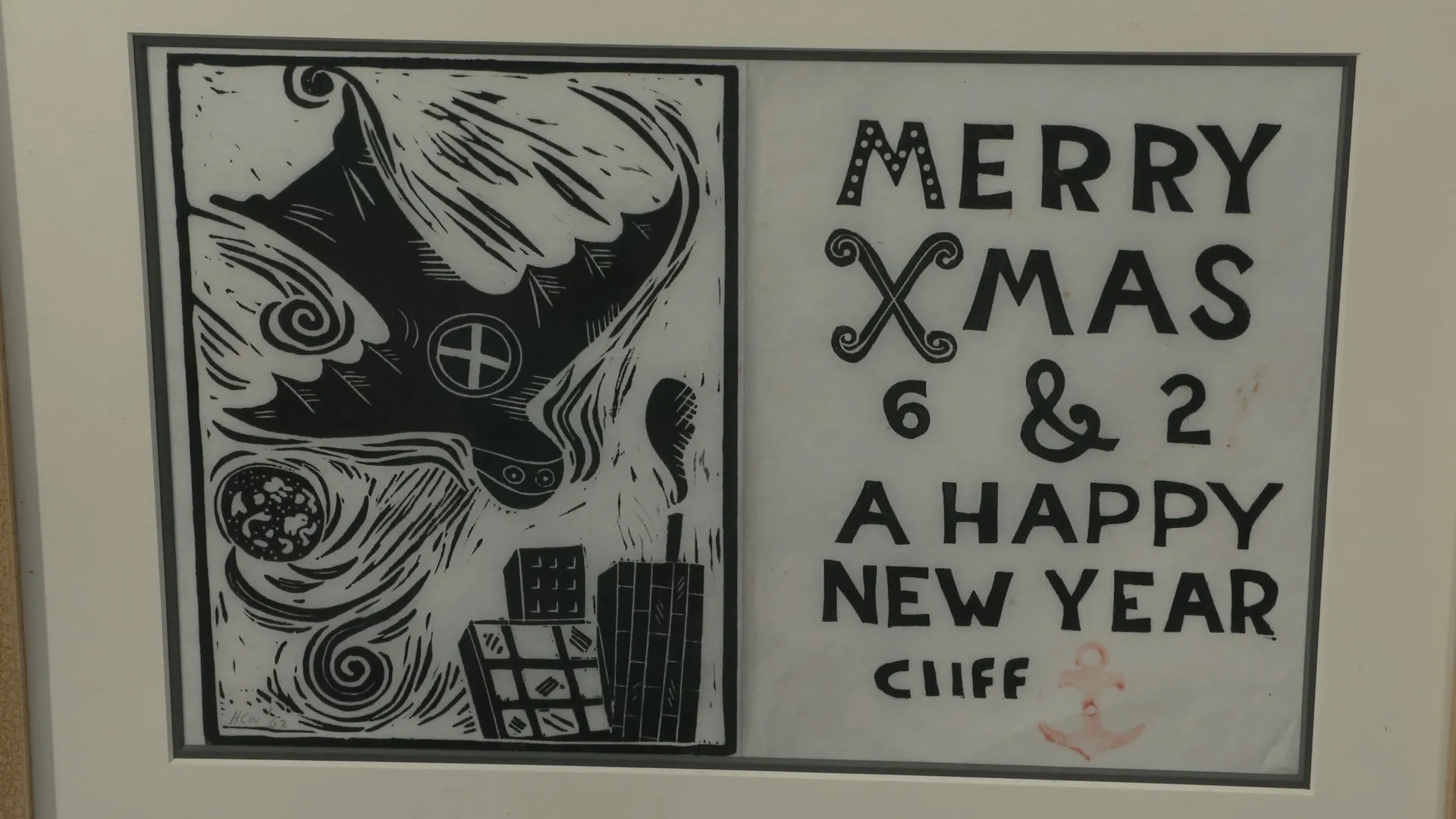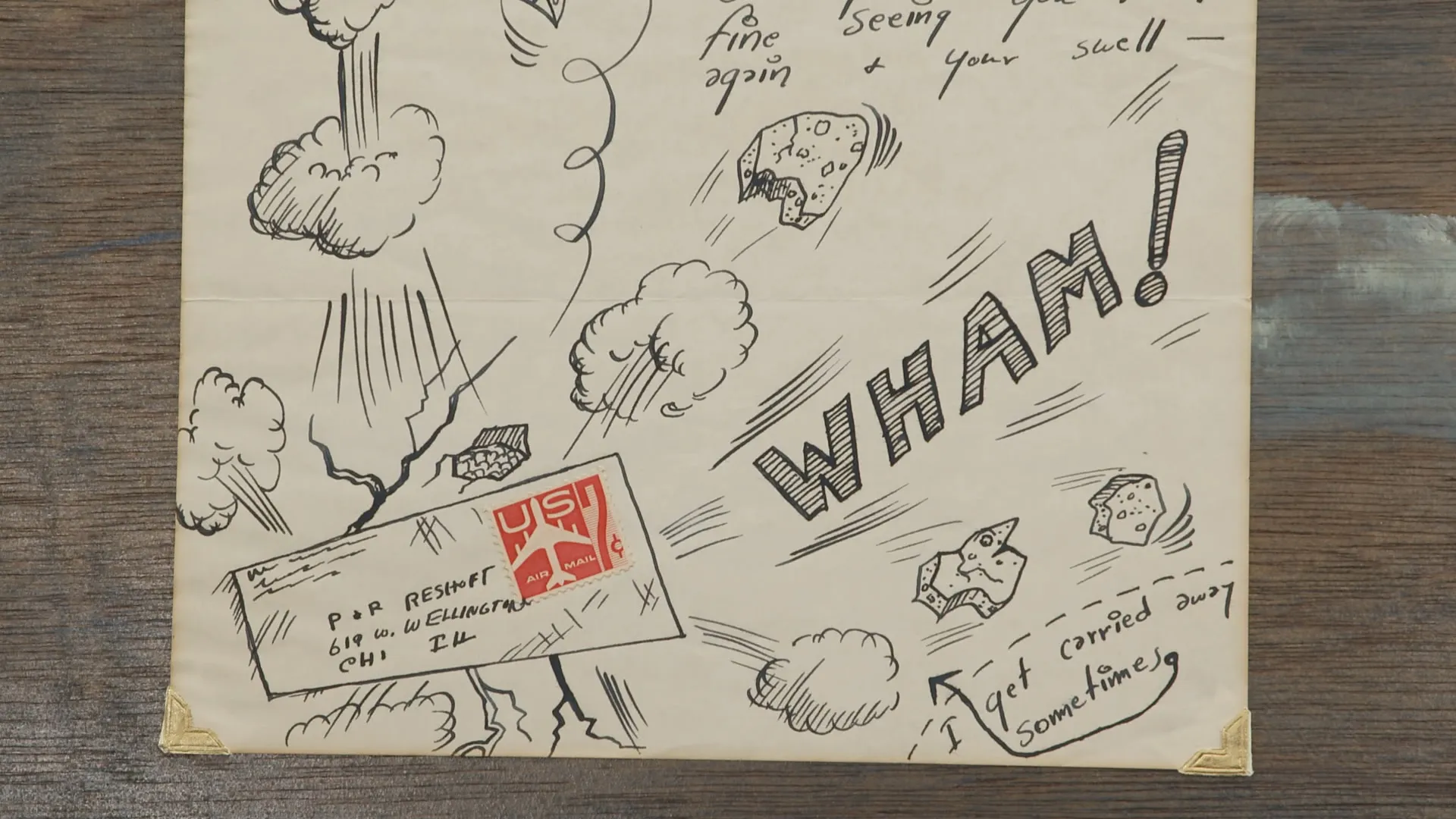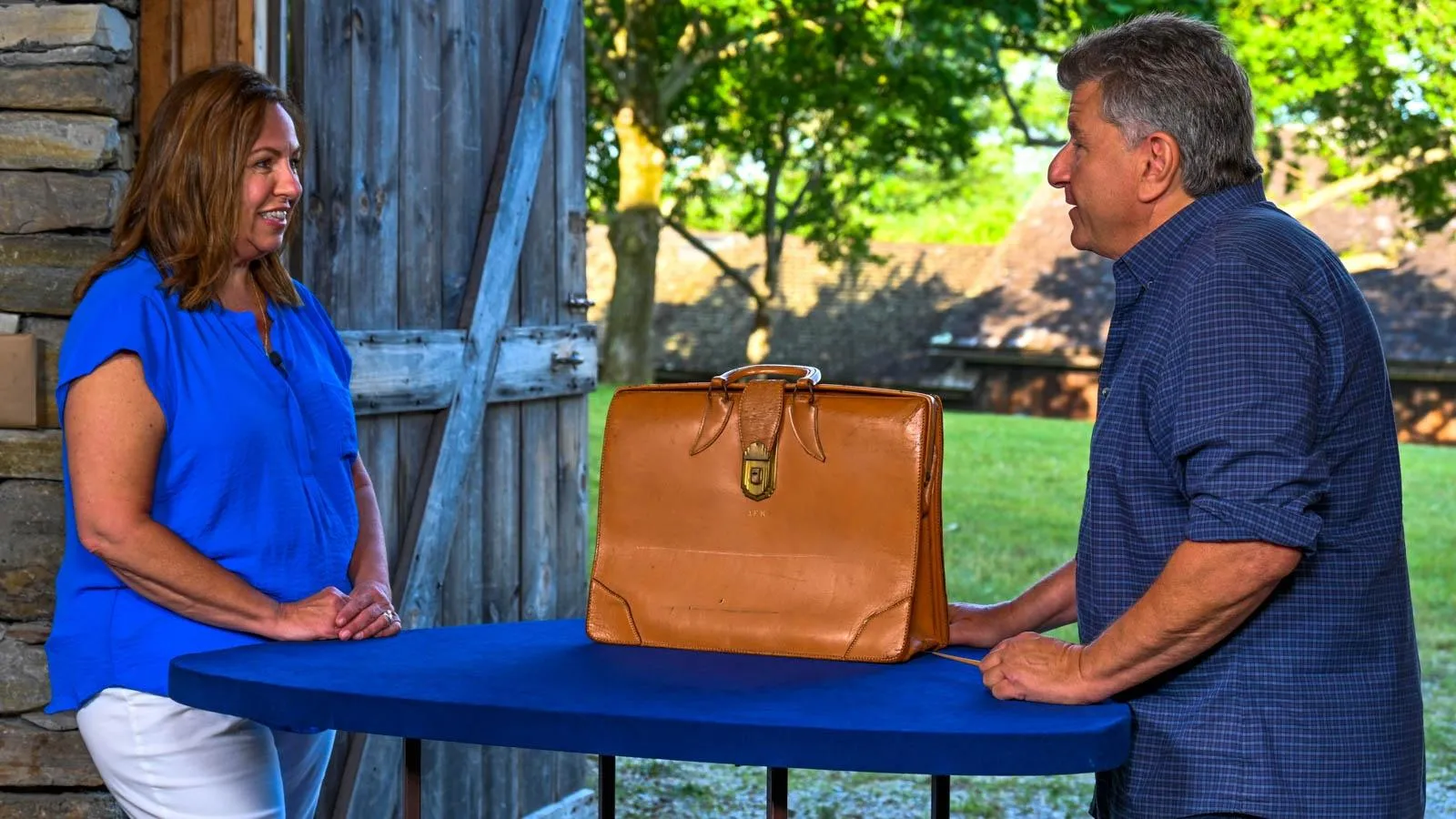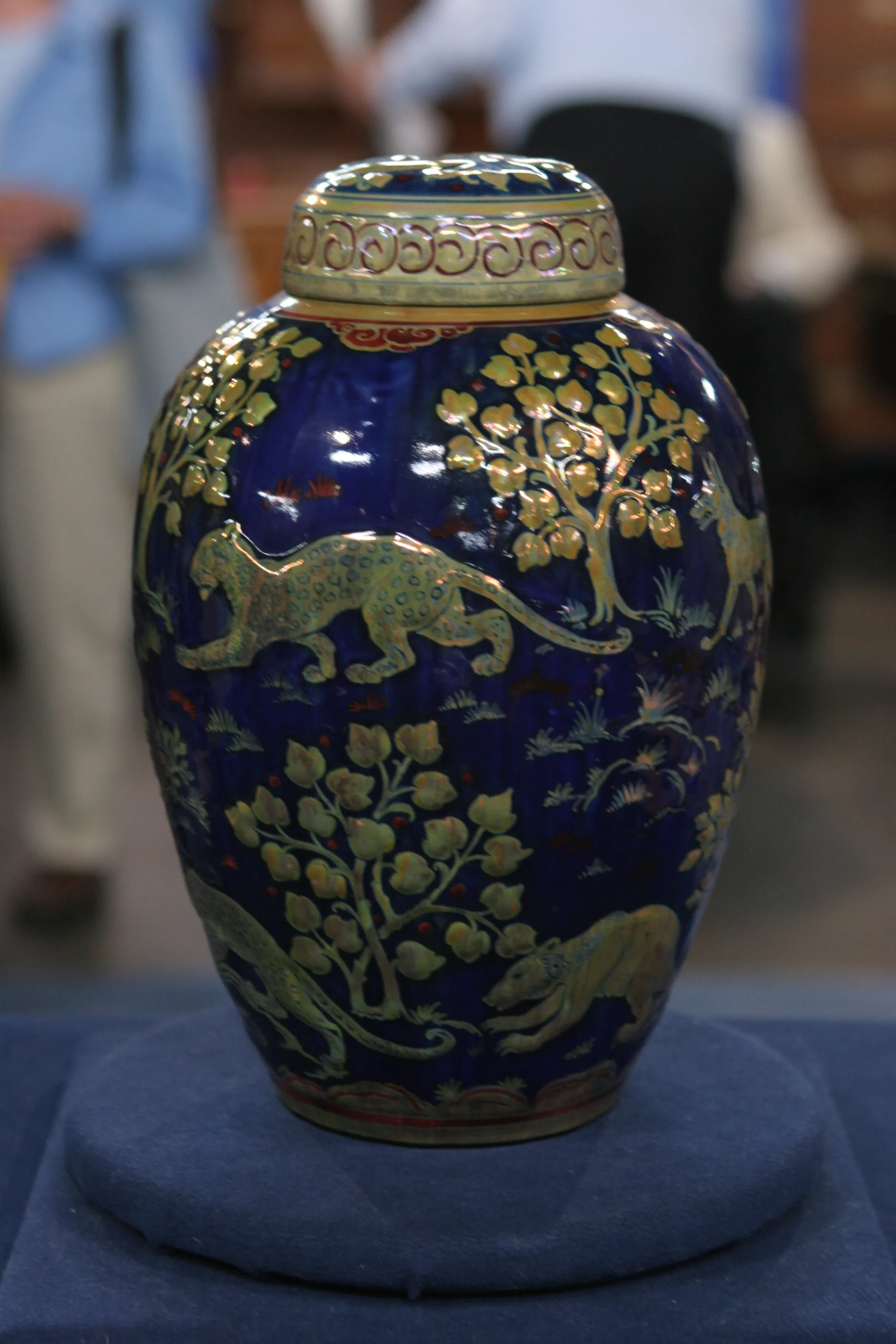1962 H. C. Westermann Letter & Linocut Print
GUEST: Over here is an illustrated letter by, uh, Cliff Westermann, who I guess is better known in the art world now as H.C. Westermann. He was a friend of my parents. They all went to the School of the Art Institute in Chicago back in the early 1950s. Cliff actually was about ten years older than my parents, because he was a veteran of both World War II and the Korean War.
APPRAISER: Mm-hmm.
GUEST: So he was at the School of the Art Institute on the G.I. Bill. He was always unique, and he was a unique student, but, um, a very kind and generous man. My, uh, parents tell a story about being a figure drawing class, and they were all drawing the model, and he was drawing a coyote.
(both laughing)
GUEST: So he, he was very unique, but also very serious. The photograph here is of Cliff in his studio...
APPRAISER: Mm-hmm.
GUEST: ...on North Avenue, right around the corner from where my parents lived. This was sent to my parents as a Christmas card in 1962.
APPRAISER: Mm-hmm. And so that's the same year as the letter.
GUEST: Yeah.
APPRAISER: And this is just a small group of the collection.
GUEST: Yeah.
APPRAISER: So we just picked some, a few interesting things to sort of talk about.
GUEST: Mm-hmm.
APPRAISER: One of the things I really like about Westermann is, he was kind of a dichotomy. You mentioned his service in World War II and the Korean War.
GUEST: Mm-hmm.
APPRAISER: And he was, when he was in the Marine Corps during World War II, he was in the Pacific arena, and he was on the U.S.S. Enterprise.
GUEST: Mm.
APPRAISER: And he was, he was in some big battles.
GUEST: Mm-hmm.
APPRAISER: He was really changed by those experiences. One of the things he writes about is being a gunner...
GUEST: Mm-hmm.
APPRAISER: ...uh, on the stern of the Enterprise, and he's sitting there doing his gunner duty, and this kamikaze pilot is coming in towards him. So he's trying to shoot this plane down...
GUEST: Mm.
APPRAISER: ...before it hits the ship. And he hits it, but hits it in such a way that the, the plane sort of veers off and hits the bow of the ship.
GUEST: Mm.
APPRAISER: And he's sitting there at the gun, but can't do anything about it.
GUEST: Mm-hmm.
APPRAISER: And so you end up with a man that's, he's really kind of two people. On the one hand, you have this wonderfully illustrated whimsical letter. "I just thought I'd drop you a little note," he says in, in the writing. And then zhoom, here's this air mail sort of piece that he's written up. It's very cute, it's very cartoonish. He talks about the "kiddies." I'm assuming that's you and a sibling.
GUEST: Mm-hmm, my sister, mm-hmm.
APPRAISER: So, very light-hearted. On the other side, he was very concerned about sort of the helplessness of the human condition, and the way humans were being overtaken by machine.
GUEST: Mm-hmm.
APPRAISER: And everything was becoming depersonalized. And he's best known for his sculptural pieces, some of which were fairly small and some of which are life-size, as you can see from our picture of him standing next to two of his robot creations.
GUEST: Mm-hmm.
APPRAISER: I love this because you get to see a sense of what he was working on, and they're beautifully crafted.
GUEST: Mm.
APPRAISER: Um, and I think the dichotomy comes out best when you look at the Christmas card. (excitedly): "Merry Christmas and Happy New Year," it says.
GUEST: (chuckles)
APPRAISER: The image, which is actually a linocut, is part of a series he did, "Disasters from the Skies." (laughs) And all of the images are planes, rocket ships, rockets, crashing into buildings and people. That dichotomy is something that really comes out in your little collection here. And that's one of the things I really love about it. And this is a print that's come up multiple times...
GUEST: Mm-hmm.
APPRAISER: ...as have many of the s, the images from this series. Uh, and generally speaking, at auction, they bring between about $2,500 and $3,500.
GUEST: Mm-hmm.
APPRAISER: Um, so they do quite well.
GUEST: Mm-hmm.
APPRAISER: Now, the letters, uh, I mean, obviously, this is a one-of-a-kind piece.
GUEST: Mm-hmm.
APPRAISER: And these do quite well. It depends on how detailed they are. If they're very colorful. So this is a fairly simple one.
GUEST: Mm-hmm.
APPRAISER: But even as a simple one, you're probably looking about $4,000 to $6,000 for it at auction.
GUEST: Mm-hmm.
APPRAISER: So it's a wonderful grouping.
GUEST: Thank you.

$6,500 - $9,500 Auction
Photos


Featured In

episode
Shelburne Museum, Hour 1
Get wowed by shocking finds from ROADSHOW's first hour at Shelburne Museum!
Fine Art
Understanding Our Appraisals
Placeholder









